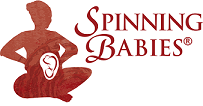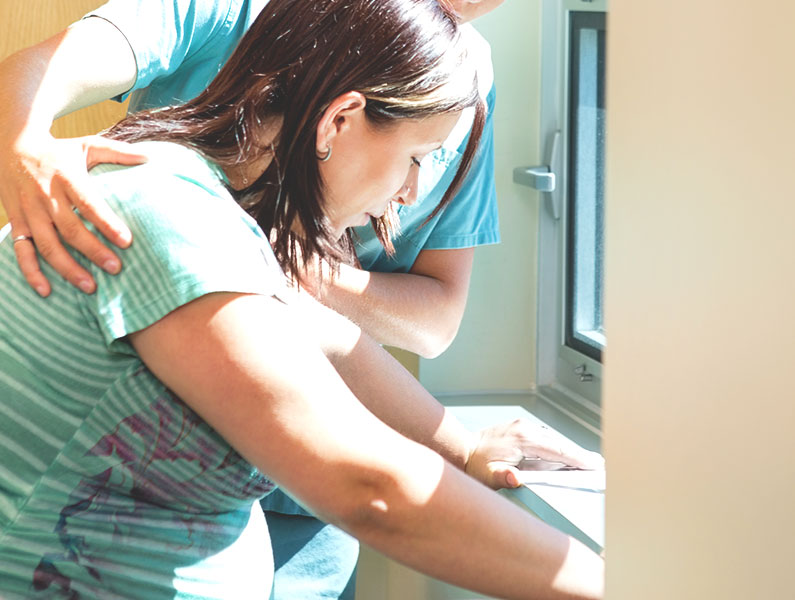Change is the movement between the points of familiarity and unfamiliarity. We are pulled between “what is” and “what if?”. There is a natural anxiety about stepping into the unknown.
Trusting oneself with the unknown is the key to a birth giver allowing themselves the mental acceptance to shift from latent labor to active labor. Opening past 5 cm requires getting out of our head. But now that we are out of our head, where are we to go? Oh, yes, the body!
Tuning into Physiology
Going into our body allows us to tune into our physiology. We observe and listen to the body’s signals of relaxation or tension, temperature, heart rate, and breath. Our breathing deepens as we calm and keep contact with ourselves. The unfamiliar can feel safe when we connect it to something we know.
What do we know about our bodies? Our bodies digest, grow (grew), sleep, wake, and do other processes. Childbirth is also a body process. Many body processes (digestion, gestation, lactation, and sexual release) work better with oxytocin than with adrenaline. Enhancing social connection supports normal birth through the release of oxytocin, when the people present are appropriate to birthing, such as mates, doulas, and trusted providers. Trust is a social response, not a professional entitlement. We are invited into a birth, and answering well to this invitation requires observing: “What is the need here?”
Potential Social Pressure in Birth Practice
As we change our mindset to have a more consistent focus on physiology, we may notice social pressures of how our profession practices birth “management” or care. We may feel pressure to watch labor from a monitor at the desk instead of bedside, accept a long labor just because it can be normal, strip membranes, break water, or push when dilated—none of which is sufficiently justified. We may hear others in our professions promoting or discouraging epidurals. These pressures are simply group decisions on how to best meet the many complex needs in birthing. Some of the needs are the birthing person’s and some are the professionals’.
When we focus on physiology first, we see new invitations to act: very long-lasting contractions during early labor or when the cervix is not dilating readily; more pain than tolerated or in unusual places, like thighs or pubic bones; back labor; lulls or stalls in labor; and finally, fetal malpositions. Even when none of these signs is present, we may simply see that there is time to do Sidelying Release or Shake the Apples, which may help normal labor to continue.
Many nurses want to introduce Spinning Babies® in early labor. As our champion, Sue Baker, RN, of Newton Wellesley Hospital says, “Who wants to be in labor longer than they have to?” We aren’t trying to rush the labor—that would be a provider-centered approach. We are tuning into the inner process of birth. We offer relaxation to the muscles that can’t relax by willpower and choose Rest Smart℠ positions that open the pelvis at the level baby is moving through.
Responding Physiologically with Spinning Babies®
After learning more about Spinning Babies®, we hope more providers will be able to avoid offering non-immediate interventions or advice without first discerning whether imbalances in birth anatomy are delaying progress or adding pain. There is room for nurturing physiology first before relying on policies and protocols of time or medically indicated interventions. Whether you are working in the hospital, birth center, or home, you can help the birthing dyad stay happily within safety parameters by addressing the needs of the anatomy. This is support for physiological birth.
We want to offer a parent-centered approach to ease the work of the birth anatomy. We offer water, food, warmth, and a bed for the comfort of labor. We can also offer what we here call Spinning Babies®.
Further Reading:
- Where’s the Physiology?
- Jiggle and Stretch Protocols
- Complying with the Birth Plan
- Holding Space for Creative Coping
Upcoming Workshops
[tribe_events_list limit=”4″]

